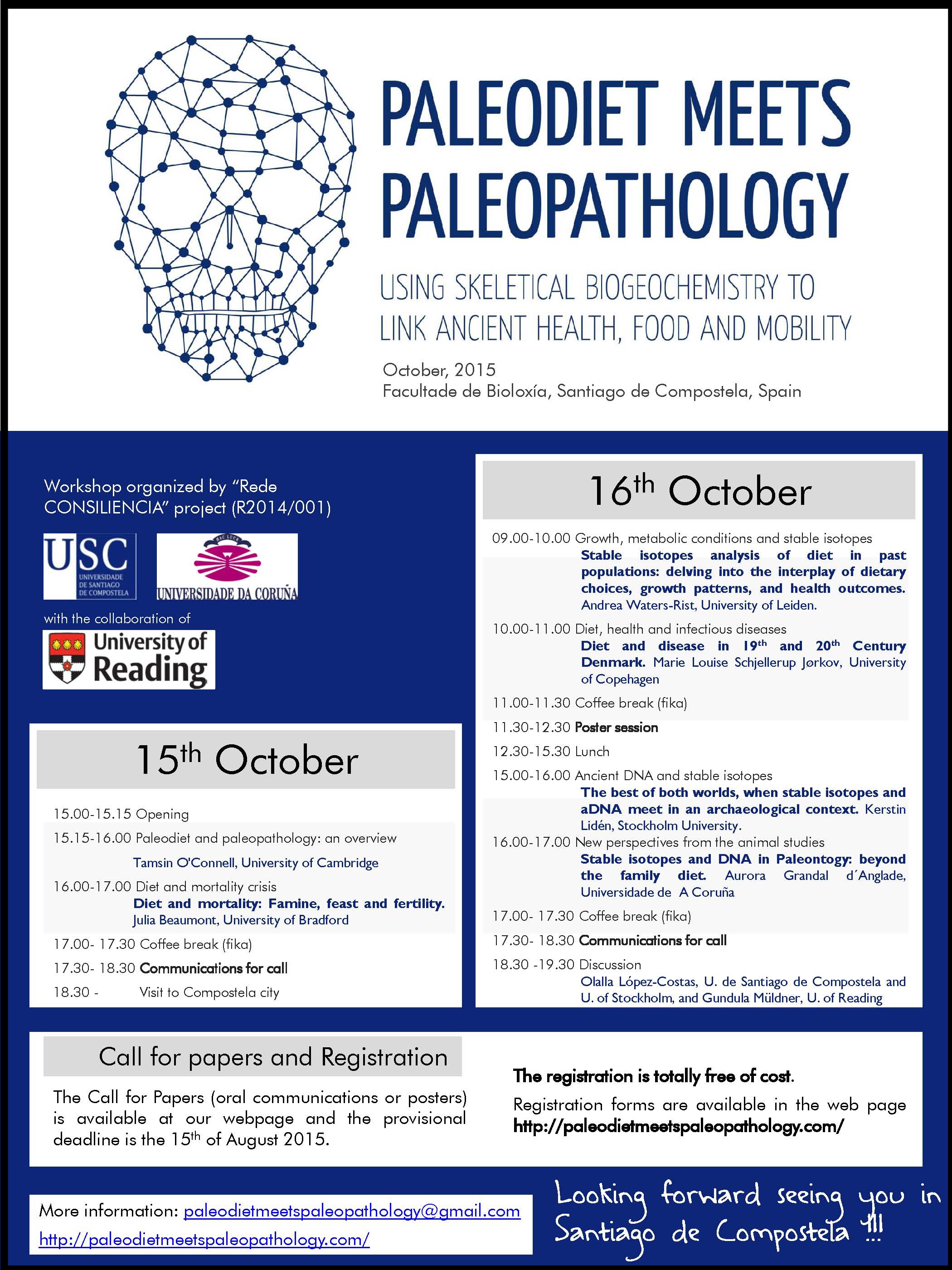09.00-10.00 Invited talk 3: Growth, metabolic conditions and stable isotopes
Stable Isotope Analysis of Diet in Past Populations: Delving into the Interplay of Dietary Choices, Growth Patterns, and Health Outcomes. A. Waters-Rist
10.00-11.00 Invited talk 4: Diet, health and infectious diseases
Diet and health in 19th and 20th century Copenhagen. M. L. Schjellerup Jørkov
11.00-11.30 Coffee break
11.30-12.30 Poster session
Chairs: A. Waters-Rist and M. L. Schjellerup Jørkov
1. Paleodiet meets paleopathology. Is there a link between diet and diseases among individuals in the Early Medieval cemeteries from Lesser Poland?. A. Kubica-Grygiel*
2. Stable isotope analysis of a 17th-century Finnish mummy with DISH. T. Väre, M. Núñez*, O. López-Costas, N. Arosén, G. Eriksson, J-A. Junno, J. Niinimäki , S. Niinimäki, M. Niskanen
3. Exploring the relationship between isotopic composition, age and metabolic conditions in subadults from the Bronze Age population of Motilla del Azuer (Central Iberia). Z. Laffranchi, E. Sánchez Cañadillas*S. Jiménez Brobeil, A. Delgado Huertas, A. Granados, T. Nájera Colino, F. Molina González.
4. Stable isotopes, diet and territoriality: a new interpretation. I. Sarasketa-Gartzia*
5. Exploring dietary and mobility patterns in medieval monastery of Las Gobas (Spain). I. Guede, L. A. Ortega, M. C.Zuluaga*, A. Alonso-Olazabal, X. Murelaga, J. L.Solaun, I. Sanchez, A. Azkarate
6. Good News for Bad Teeth: Paleodiet Through the Isotopic Analysis of Dental Calculus. C. Davenport*, S. Gonzalez, G. Richard Scott, S. R. Poulson, C. Burrell, E. Dove, I. Towle
7. Diet and social differentiation in medieval Muslim population from Tauste (Zaragoza, NE Spain): Chemical and isotopic evidences. I. Guede, L. A. Ortega*, M. C. Zuluaga, A. Alonso-Olazabal, X. Murelaga, J. Rodriguez Aller, M. Pina, F. J. Gutierrez.
8. Case study: Application of the clinical periodontal diagnostic method in an archaeological sample from a medieval context. S. Llidó Torrent *, F. Alpiste-Llueca , D.C. Salazar-García
9. Breastfeeding strategies and children’s health status during Mesolithic-Neolithic. J. Jovanović, C. Becdelievre*, S. Stefanović, M. Le Roy, E. Herrscher, G. Goude.
12.30-15.00 Lunch
15.00-16.00 Invited talk 5: Ancient DNA and stable isotopes
The best of both worlds, when stable isotopes and aDNA meet in an archaeological context. K. Lidén.
16.00-17.00 Invited talk 6: New perspectives from the animal studies
Stable isotopes and DNA in Paleontology: beyond the family diet. A. Grandal d ́Anglade.
17.00- 17.30 Coffee break
17.30- 18.30 Podium presentations 2. Trace elements, aDNA and stable isotopes to approach human and animal diet and pathology.
Chairs: K. Lidén and A. Grandal d´Anglade
17:30-17:45 Fish-eating sheep at Lake Inari? Stable isotope analysis of animals offered at Sámi sacred sites in Finnish Lapland 1000-1800 AD. M. Núñez*, K. Lidén, G. Eriksson
17:45-18:00 Determination of bone lead in a Roman Period population of Granada (Spain). N. Lupiáñez-Corpas*, M. C. Martín-Domingo, F. Gil-Hernández.
18:00-18:15 New Rum, Old Poison: Lead Exposure and Rum Consumption from Human Remains at the Royal Naval Hospital Cemetery in Antigua, West Indies. D. Wilson*, A. Lieverse, T. Swanston, R. Murphy, I. Coulthard, D. Cooper, T. Varney
18:15-18:30 The Genetics of Leprosy in Medieval Europe. C. Economou
18.30 -19.30 Discussion
Paleodiet and paleopathology: Ways Forward. G. Müldner and O. López-Costas.

